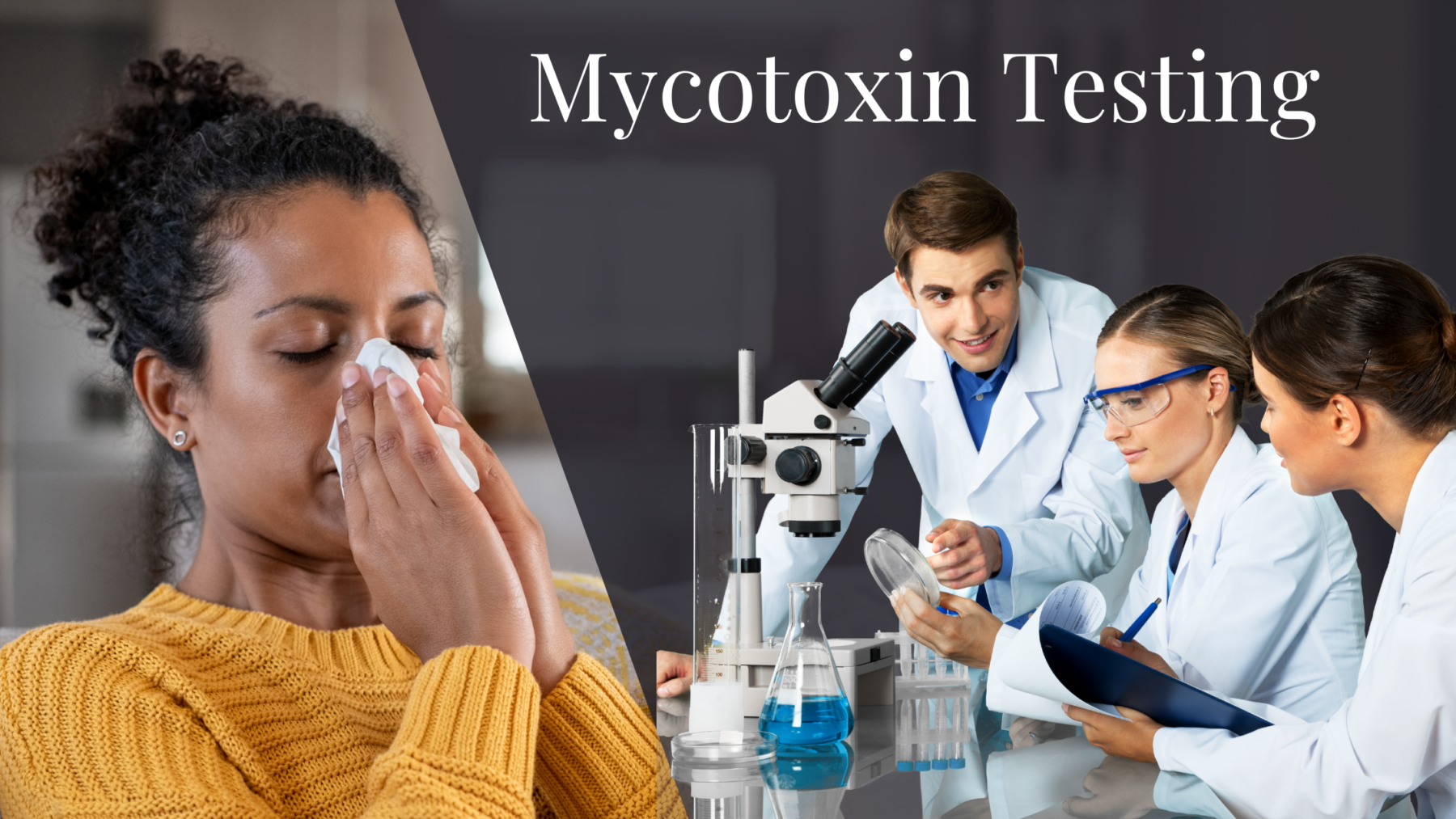Exactly How Mycotoxin Screening Aids Protect Against Contamination and Safeguard Food Products

Mycotoxin testing is a vital method in the food market, offering as a frontline protection versus contamination by harmful toxic substances created by mold and mildews. Through the application of sophisticated techniques like High-Performance Fluid Chromatography (HPLC) and Fluid Chromatography-Mass Spectrometry (LC-MS), food producers can properly evaluate and discover mycotoxin degrees in farming items.
Understanding Mycotoxins
Comprehending mycotoxins begins with identifying that they are toxic second metabolites generated by particular mold and mildews, which can contaminate farming products. These metabolites are not important for the growth or recreation of the fungi however can have serious ramifications for human and animal wellness. Mycotoxins are typically found in staple crops such as corn, wheat, barley, and nuts, where they can proliferate under certain conditions of wetness and temperature.
There are several kinds of mycotoxins, each produced by different fungal species. Fusarium varieties generate trichothecenes and fumonisins, both of which are connected with various severe and persistent health and wellness concerns.

Dangers of Mycotoxin Contamination
The threats of mycotoxin contamination are complex, positioning substantial risks to both food safety and public health and wellness. Mycotoxins, toxic compounds produced by certain kinds of fungis, can infect a large variety of farming products including grains, nuts, flavors, dried out fruits, and coffee.
Economic impacts are an additional significant issue. Polluted crops can lead to substantial economic losses for farmers and food manufacturers as a result of minimized returns and the need for expensive purification actions. Additionally, worldwide profession can be significantly hindered as countries implement stringent mycotoxin guidelines to protect their populaces, causing declined shipments and strained trade connections.
Environmental aspects such as climate modification intensify the risk of mycotoxin contamination. Variations in temperature and humidity can create desirable conditions for fungal development, raising the possibility of contamination occasions. Therefore, understanding and mitigating these risks are important for making sure the safety and honesty of international food materials.
Approaches of Mycotoxin Checking
Accurately recognizing mycotoxin contamination in farming items is vital for guarding public wellness and keeping food safety and security requirements. Various approaches are used to discover and quantify mycotoxins, each offering particular benefits and limitations.
High-Performance Fluid Chromatography (HPLC) is an extensively utilized approach due to its high sensitivity and precision. It involves dividing mycotoxins from various other materials in a sample, making it possible for exact quantification. Likewise, Fluid Chromatography-Mass Spectrometry (LC-MS) combines liquid chromatography with mass spectrometry to provide in-depth molecular details, making it specifically beneficial for determining multiple mycotoxins simultaneously - Mycotoxin testing Services.

Gas Chromatography-Mass Spectrometry (GC-MS) and Thin-Layer Chromatography (TENDER LOVING CARE) are also employed, each with one-of-a-kind applications. GC-MS is reliable for volatile mycotoxins, while TLC offers a less complex, cost-efficient alternative for preliminary screening.
Benefits of Normal Examining
Routine screening for mycotoxins in farming products supplies Continued numerous advantages, substantially adding to public health and food safety. By determining contamination early, regular testing aids prevent the circulation of harmful foods, thereby lowering the risk of mycotoxin-related ailments among consumers. This proactive technique not only safeguards human wellness however likewise enhances the total quality of food products.
Regular testing likewise supports regulative conformity. Different nations and regions have developed rigorous limitations for mycotoxin degrees in food and feed. Complying with these restrictions with regular screening ensures that distributors and manufacturers fulfill legal requirements, consequently preventing fines and trade barriers. Maintaining conformity cultivates customer trust fund and brand name online reputation, which are essential for market success.
Additionally, normal mycotoxin testing can result in substantial financial advantages. Early detection of contamination enables prompt intervention, reducing prospective losses from widespread contamination. Executing regular screening protocols can likewise minimize recall expenses and relevant obligations, which can be monetarily devastating.
Moreover, normal testing gives beneficial data that can educate better agricultural methods and storage conditions. By comprehending patterns of contamination, go to this website manufacturers can embrace preventive actions, thus reducing future threats and contributing to the sustainability of the food supply chain.
Applying Examining Procedures
Executing effective mycotoxin screening methods is crucial for making sure the safety and security and high quality of farming items. Each phase needs to be inspected to pinpoint where mycotoxin contamination is most likely to take place.
Once essential control factors are recognized, picking ideal testing approaches is vital. Typical techniques consist of enzyme-linked immunosorbent assay (ELISA), high-performance liquid chromatography (HPLC), and mass spectrometry (MS) Each method has its strengths and weak points; hence, picking the right one relies on the details mycotoxin being examined, the needed level of sensitivity, and readily available sources.

Lastly, incorporating the testing protocols right into a detailed food safety and security management system is advisable. This enhances traceability and allows swift restorative activities when contamination is identified, consequently protecting the integrity of the food supply chain.
Verdict
Mycotoxin testing is crucial in preventing contamination and safeguarding food products by making it possible for very early detection of damaging toxic substances produced by molds in farming products. Advanced approaches such as HPLC and LC-MS ensure compliance with safety policies and protect customers from wellness threats. Routine screening improves brand track record, economic security, and rely on food safety and security by lessening contamination-related losses and maintaining high standards in food production. Implementing strenuous screening procedures is therefore vital for the market's general well-being.
Mycotoxin screening is a vital technique in the food market, offering as a frontline protection against contamination by hazardous toxins created by molds. An integrated method including agricultural methods, storage administration, and additional info routine testing can minimize the dangers associated with mycotoxin contamination, making sure food safety and public health and wellness.
The dangers of mycotoxin contamination are multifaceted, posturing considerable risks to both food security and public health and wellness.Routine screening for mycotoxins in agricultural products provides countless advantages, dramatically contributing to public wellness and food safety.Mycotoxin screening is necessary in preventing contamination and safeguarding food products by allowing very early discovery of dangerous toxins created by mold and mildews in agricultural products.